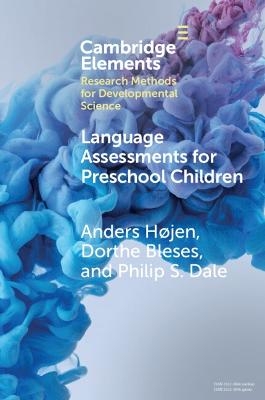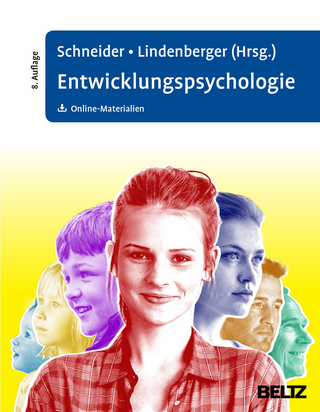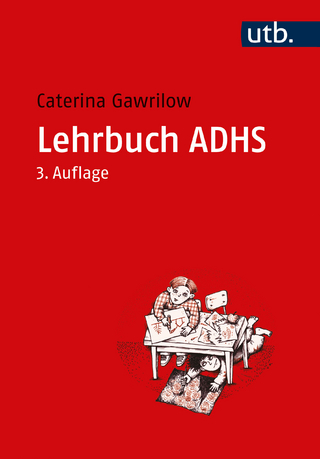
Language Assessments for Preschool Children
Validity and Reliability of Two New Instruments Administered by Childcare Educators
Seiten
2022
Cambridge University Press (Verlag)
978-1-108-92717-8 (ISBN)
Cambridge University Press (Verlag)
978-1-108-92717-8 (ISBN)
This Element discusses purposes, advantages, and disadvantages as well as the challenges of different formats of language assessment. It also introduces two educator-administered instruments with respect to content, norming, gender and socioeconomic influences as well as psychometric qualities.
This Element has two main purposes. Firstly, it discusses purposes, advantages, and disadvantages as well as the challenges of different formats of language assessment, concluding with a focus on educator-administered language assessment in early childhood and education programs. It addresses the selection of assessment domains, the trade-off between brevity and precision, the challenge of assessing bilinguals, and accommodating the requirements of funders (e.g., government agencies) and users (e.g., educators and schools). It draws on lessons learned from developing two instruments for a national Danish-language and preliteracy assessment program. Secondly, it introduces those two educator-administered instruments-Language Assessment 3-6 (LA 3-6) and Language Assessment 2-year-olds (LA 2)-with respect to content, norming, gender and socioeconomic influences as well as psychometric qualities. The intention is that this experience can help enable the extension of the educator-based approach to other languages and contexts, while simultaneously acknowledging that linguistic and cultural adaptations are crucial.
This Element has two main purposes. Firstly, it discusses purposes, advantages, and disadvantages as well as the challenges of different formats of language assessment, concluding with a focus on educator-administered language assessment in early childhood and education programs. It addresses the selection of assessment domains, the trade-off between brevity and precision, the challenge of assessing bilinguals, and accommodating the requirements of funders (e.g., government agencies) and users (e.g., educators and schools). It draws on lessons learned from developing two instruments for a national Danish-language and preliteracy assessment program. Secondly, it introduces those two educator-administered instruments-Language Assessment 3-6 (LA 3-6) and Language Assessment 2-year-olds (LA 2)-with respect to content, norming, gender and socioeconomic influences as well as psychometric qualities. The intention is that this experience can help enable the extension of the educator-based approach to other languages and contexts, while simultaneously acknowledging that linguistic and cultural adaptations are crucial.
1. Introduction; 2. Educational language assessment in a context of a national screening program; 3. A language assessment instrument for 3-6-year-olds; 4. A language assessment instrument for 2-year-olds; 5. International lessons to be learned from the Danish assessment program and instrument development.
| Erscheinungsdatum | 25.07.2022 |
|---|---|
| Reihe/Serie | Elements in Research Methods for Developmental Science |
| Zusatzinfo | Worked examples or Exercises |
| Verlagsort | Cambridge |
| Sprache | englisch |
| Maße | 153 x 228 mm |
| Gewicht | 172 g |
| Themenwelt | Geisteswissenschaften ► Psychologie ► Entwicklungspsychologie |
| ISBN-10 | 1-108-92717-3 / 1108927173 |
| ISBN-13 | 978-1-108-92717-8 / 9781108927178 |
| Zustand | Neuware |
| Informationen gemäß Produktsicherheitsverordnung (GPSR) | |
| Haben Sie eine Frage zum Produkt? |
Mehr entdecken
aus dem Bereich
aus dem Bereich
Vormals Oerter & Montada
Buch | Hardcover (2018)
Julius Beltz GmbH & Co. KG (Verlag)
64,00 €
Buch | Hardcover (2022)
Klett-Cotta (Verlag)
55,00 €


